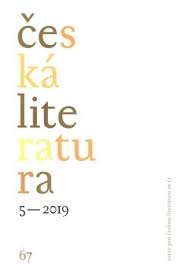Legenda jako ars compilandi
Opisování, dopisování a přepisování v Bridelově Slávě svatoprokopské
Copying, adding and rewriting in Bridel’s Sláva svatoprokopská
Author(s): Marie ŠkarpováSubject(s): Czech Literature
Published by: AV ČR - Akademie věd České republiky - Ústav pro českou literaturu
Keywords: compilation; hagiography; historia sacra; religious polemics; polemical theology; early modern literature; Bridel Fridrich; Saint Prokopius
Summary/Abstract: It is the objective of this paper to seek out new interpretational procedures for the text of Saint Prokopius Sláva svatoprokopská (1662) by Fridrich Bridel and for early modern Czech hagiography in general. In spite of the intensive interest in Bridel, considered to be one of the chief representatives of Czech literary Baroque, literary history hashitherto paid scant attention to his Sláva svatoprokopská. The greatest obstacle to interpretation of this text written by Bridel was clearly that it was neither an original work in the sense of the modern-era aesthetic of genius nor a work of interest from the standpoint of the history of editing or text criticism (Bridel was not endeavouring to make some medieval hagiographical text available in line with the Bollandists). So what could possibly interest literary history about a hagiographical text that was intentionally written as a compilation of numerous older and contemporary texts and that almost programmatically intended to „merely“ reduplicate? One possible solution is provided if a compilation is appraised as one of the basic practices of textual production during the pre-modern period, whose task it was togather knowledge dispersed in various texts and to systematically arrange it and make it available in condensed form within a single book, thus facilitating fast and easy access to the claims of the authorities. Compilation is one of the textual procedures involved in the targeted treatment of literary manifestations of the past, reminding us that literary output also involves an aspect whereby existing texts are rewritten, and it may be a highly creative act. Although Sláva svatoprokopská is a text that emphasizes acceptance, its relationship to the cited texts is not simply repetition and confirmation of the textual connection, but it is much more complex: the text copying in it not only involves (commenting) additions, but at the same time the accepted piece often recontextualizes in a radically different way, transforming and rewriting. This study attempts to present in detail this creative treatment of adopted textual material and the complexity of the intertextual connections between Sláva svatoprokopská, including analyses of the exception, reductive and compressive techniques used by Bridel, along with his selection criteria. Hence our objective was not to find out what Sláva svatoprokopská can testify about the first abbot of the Sázava Monastery as a historical figure, but all it can testify about Czech hagiographic discourse in the 1660s, which ideals are involved in this text on Saint Prokopius, which meanings are ascribed to him and which text strategies are used to achieve those ends, and not least, how this text relates to the (literary) past, which meanings are ascribed in it to the (Czech) Middle Ages. As Bridel’s literary compilation technique was by no means unique in its day, this paper also attempts to offer a functional tool for the analysis of Czech hagiography and 17th and 18th century Czech religious prose in general.
Journal: Česká literatura
- Issue Year: 67/2019
- Issue No: 5
- Page Range: 645-683
- Page Count: 39
- Language: Czech

